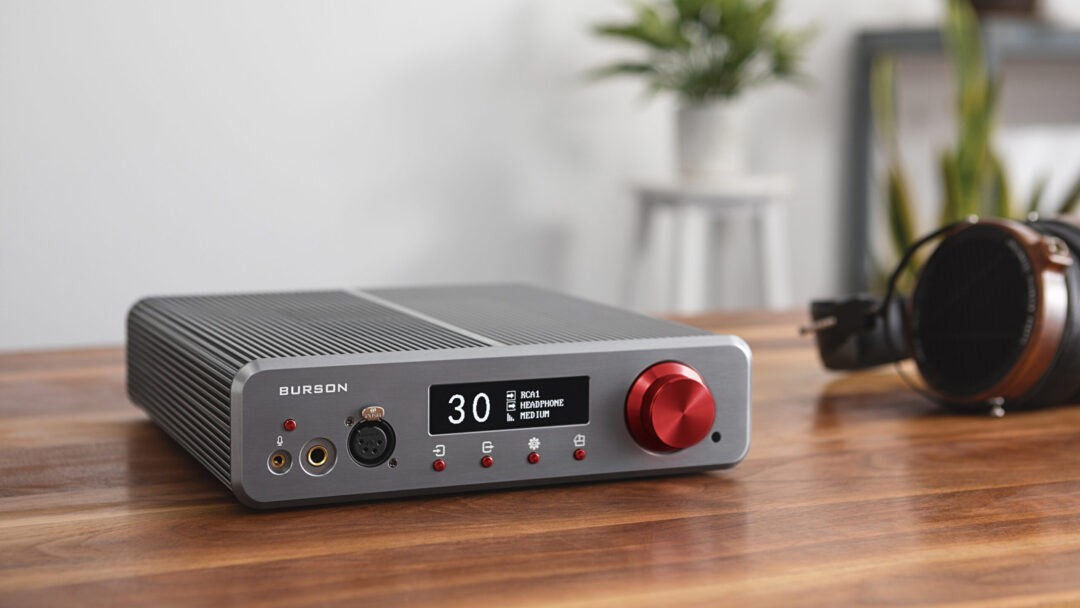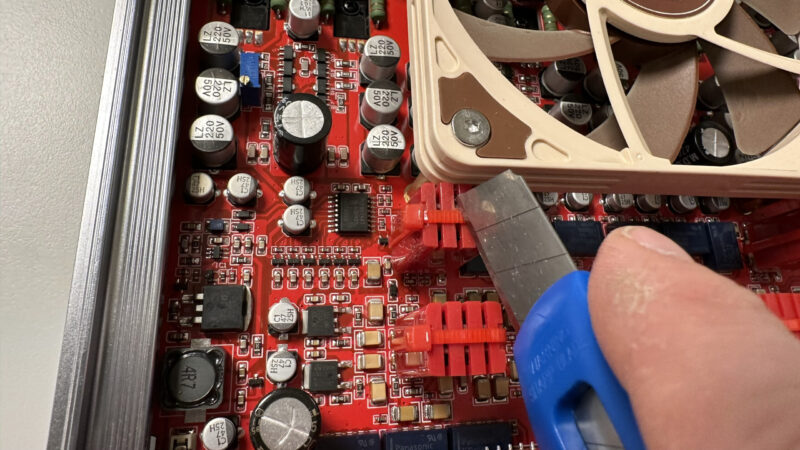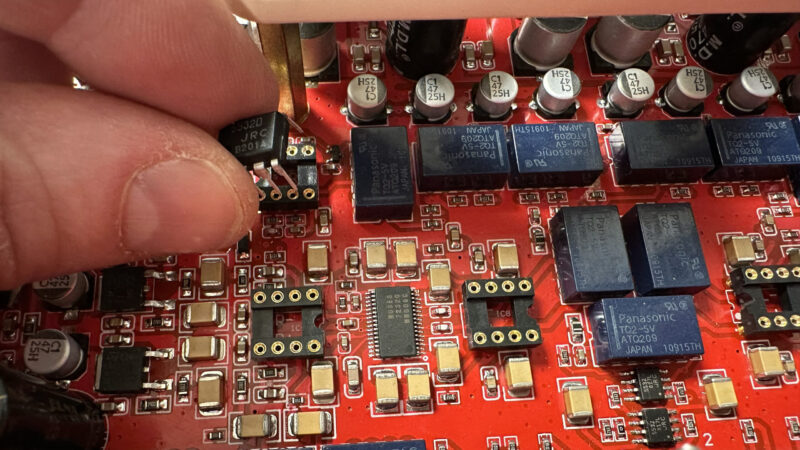Australian Burson Audio has been known for its headphone amplifiers for about 10 years. Both with and without DAC built in. And where a few competing headphone amps might be skimping a bit (Questyle and Marantz, I’m looking at you!), Burson has never had that problem.
We loved the first Soloist and also liked the Conductor, the main difference being that the latter had a built-in DAC. But since we liked the amp part better than the DAC part, the Soloist emerged as the better buy of the two.
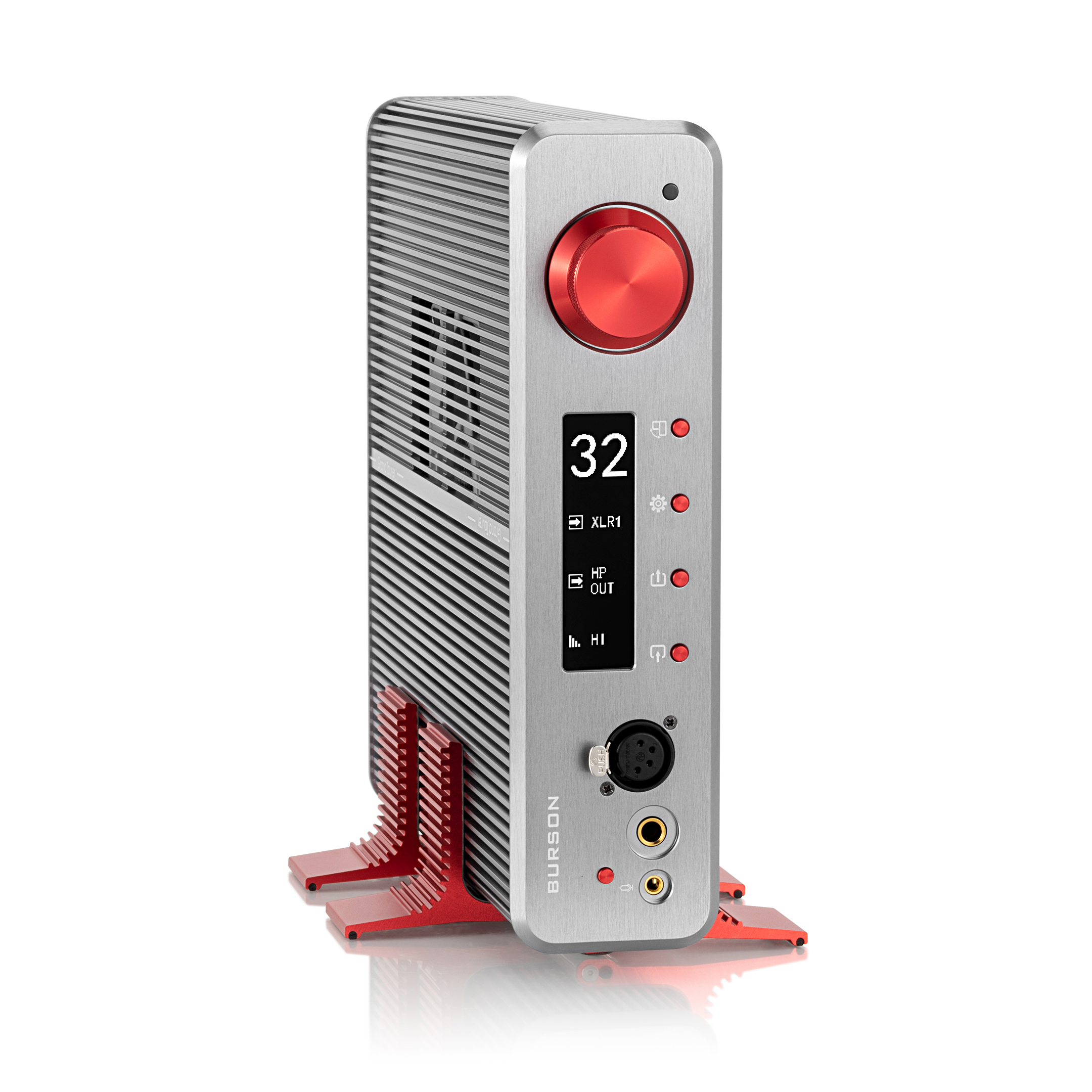
Powerhouse
Now in its third generation, the Soloist has two versions to choose from. The ‘regular’ Soloist 3X Performance with 4 hefty watts balanced in 32 ohms, and the one you’ll read about here. Namely the new Grand Tourer version – which doubles the power! And not only does it deliver 8 watts into 32 ohms: lower the impedance to 16 ohms, and the GT amplifier offers a crazy 10 watts! At the opposite end, it’s got 3.8 watts to play with into 100 ohms and 640 milliwatts into 300 ohms. The numbers suggest we’re dealing with a very capable powerhouse here.
All these figures, by the way, are in balanced operation with the 4-pin XLR out. The ‘regular’ unbalanced headphone output has half as much power out, as the output stage is balanced. But that’s still a lot more than you or your headphones will ever need.
I’ve actually been testing the lovely Burson Soloist 3X GT for many months now, so I’ve had plenty of time to get to know it. Other amps have come and gone, but this amp has been part of my permanent arsenal for over half a year alongside the Auralic Taurus and Sennheiser HDV 820. It’s mainly the Hegel HD30 that’s been doing the digital signal processing.
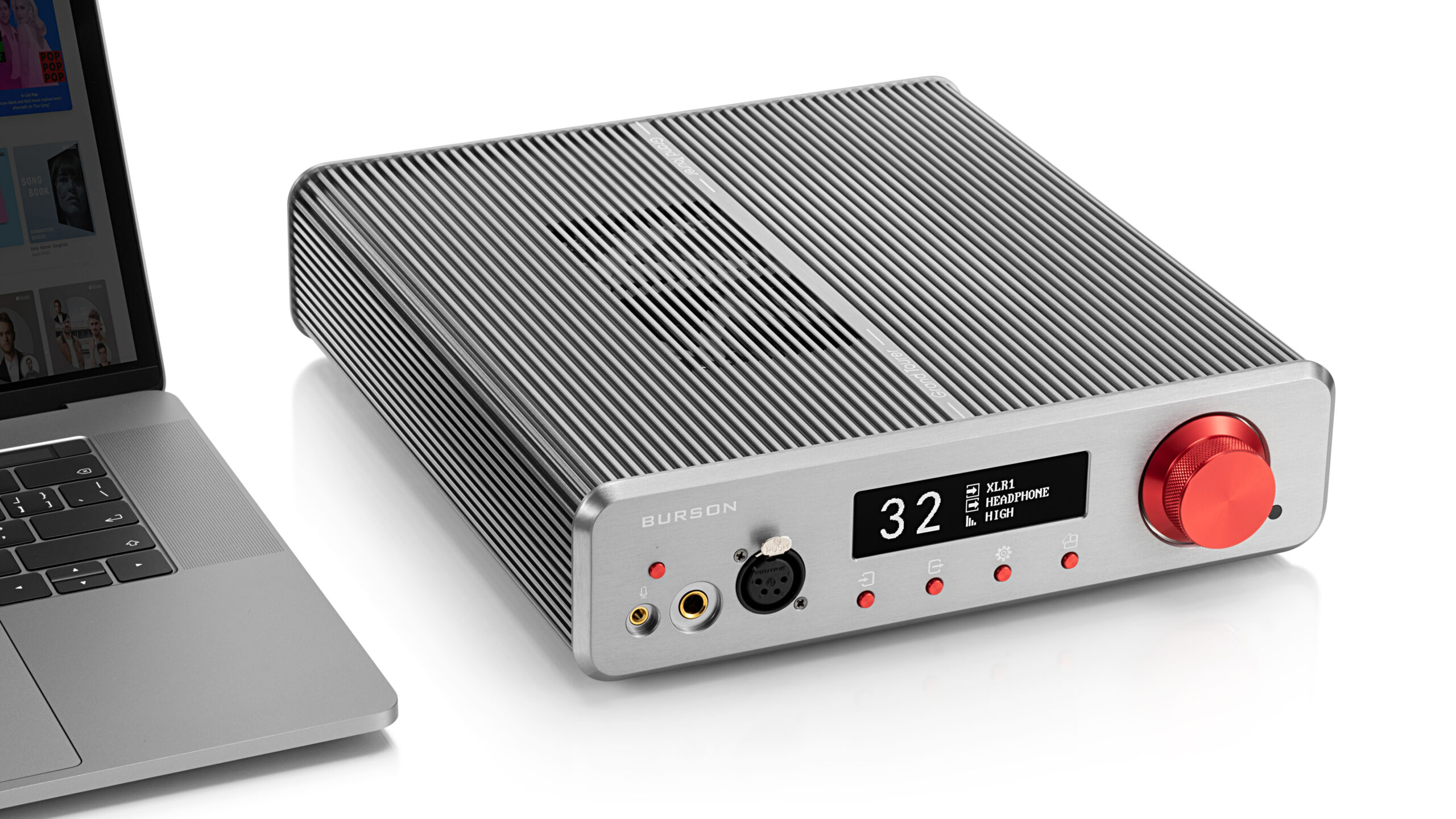
Interchangeable parts
The Soloist 3X GT has a total of six operational amplifiers (op-amps), three per channel. These are of Burson’s latest type, called V6 Vivid. The box also contains six others of the V6 Classic type. You can switch to these yourself if you want to change the sound signature of the amplifier. The Vivid is, according to Burson, perhaps the world’s best op-amp, but here you have the opportunity to experiment.
NB! You need to unscrew the chassis with the supplied allen key and then make sure that each op-amp is mounted in the correct orientation (make sure that the marking on the IC matches the notch in the socket on the motherboard). This is because it is possible to mount them upside down, which means that they burn out as soon as the amplifier is switched on. In other words, it’s not for beginners, and I honestly don’t understand why Burson has so much faith in their customers that they choose to make these parts user-replaceable. But at least it’s an interesting detail, and a bit of fun to be able to test back and forth. Here’s a little spoiler alert: It sounds best with the ones already installed.
Three gain steps
The powerful Soloist 3X Grand Tourer has three gain steps, where you choose based on how much power your headphones need. In most cases, you can safely leave it on Low, while slightly more heavily driven headphones might prefer Medium to really flourish. Personally, I’ve never tested any headphones where I’ve needed to set the amp to High.
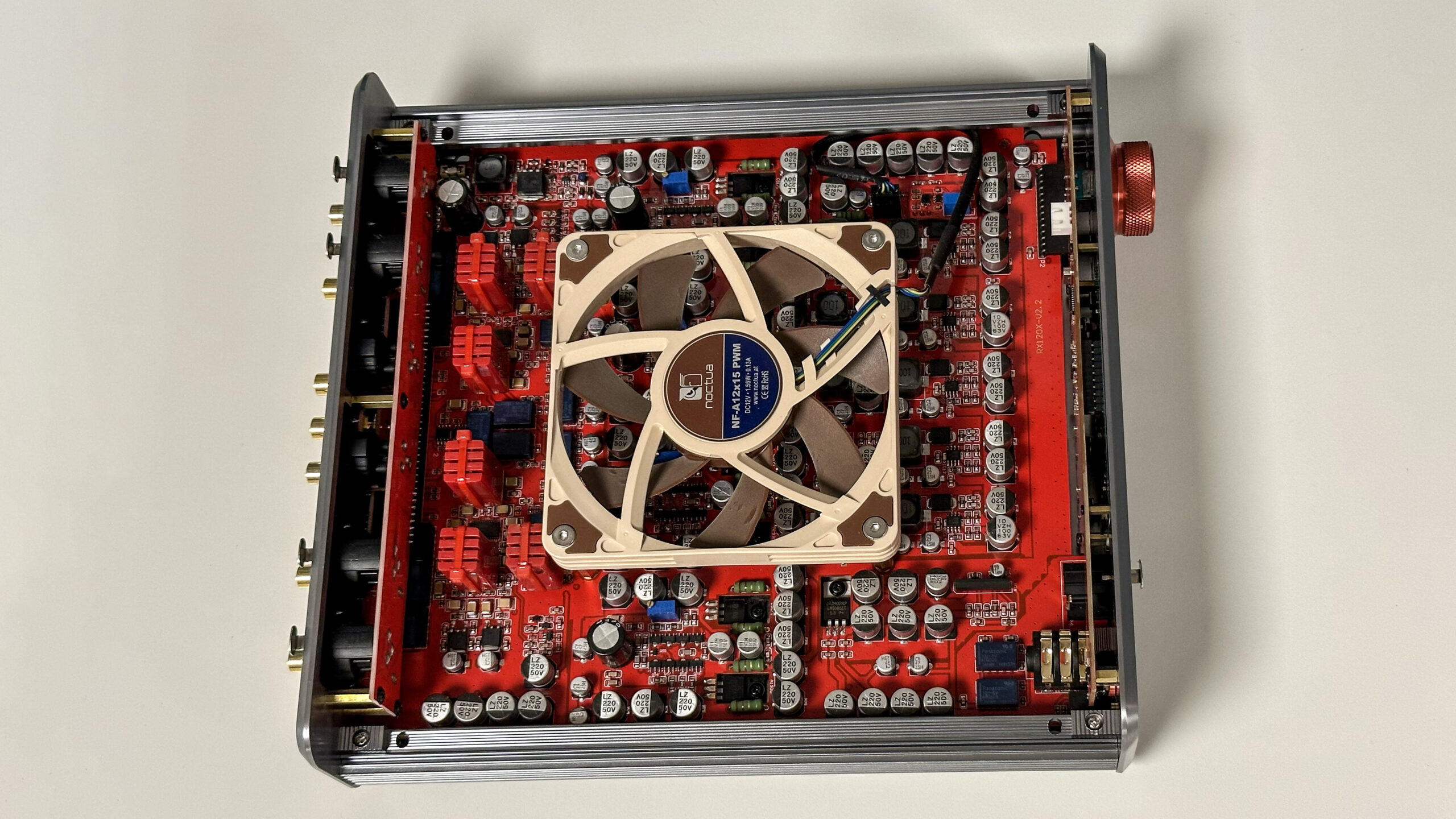
We need to talk about the fan
There’s one thing you immediately notice about this beautiful beast of an amplifier. The rounded aluminium chassis has grooves that give a peek into the amp’s tidy interior and allow it to dissipate heat. And on the inside, there’s a massive PC fan. The kind gamers know about.
Fortunately, the fan is from Noctua, and it’s among the quietest of the bunch. Burson has worked hard to make the active cooling system as quiet as possible, and they claim to have managed to get it to a level where you can’t hear it. For most rooms have a background noise of around 30 dBA, while the fan in the Burson amplifier has a noise limit of less than 25 dBA.
I won’t dispute these figures, but let’s just be honest: The fan is audible. Admittedly you don’t notice it when playing music at normal volume, but with headphones open you hear a constant hiss through quiet passages. I therefore wish it had progressive control, so it only turned on when you needed it. Instead, it spins constantly while the amp is on.

Noise floor
Additionally, I noticed that with the gain knob one notch up from lowest, the amp has an audible noise floor. With low gain, there’s a barely audible hiss through medium-light headphones, but it becomes more audible at mid-level. Switching to high gain, the hissing sound borders on the annoying. In other words, this should only be used if you have headphones with very low sensitivity. For example, the HiFiMAN HE6.
Audible noise floor is largely only a problem with very lightly driven headphones, including earbuds. For example, there is no problem with hiss on either the market reference Sennheiser HD 800 S or my favourite Audeze LCD-5, but it is in excess through the Sennheiser IE 900 earbuds – and that even with the gain set to Low.
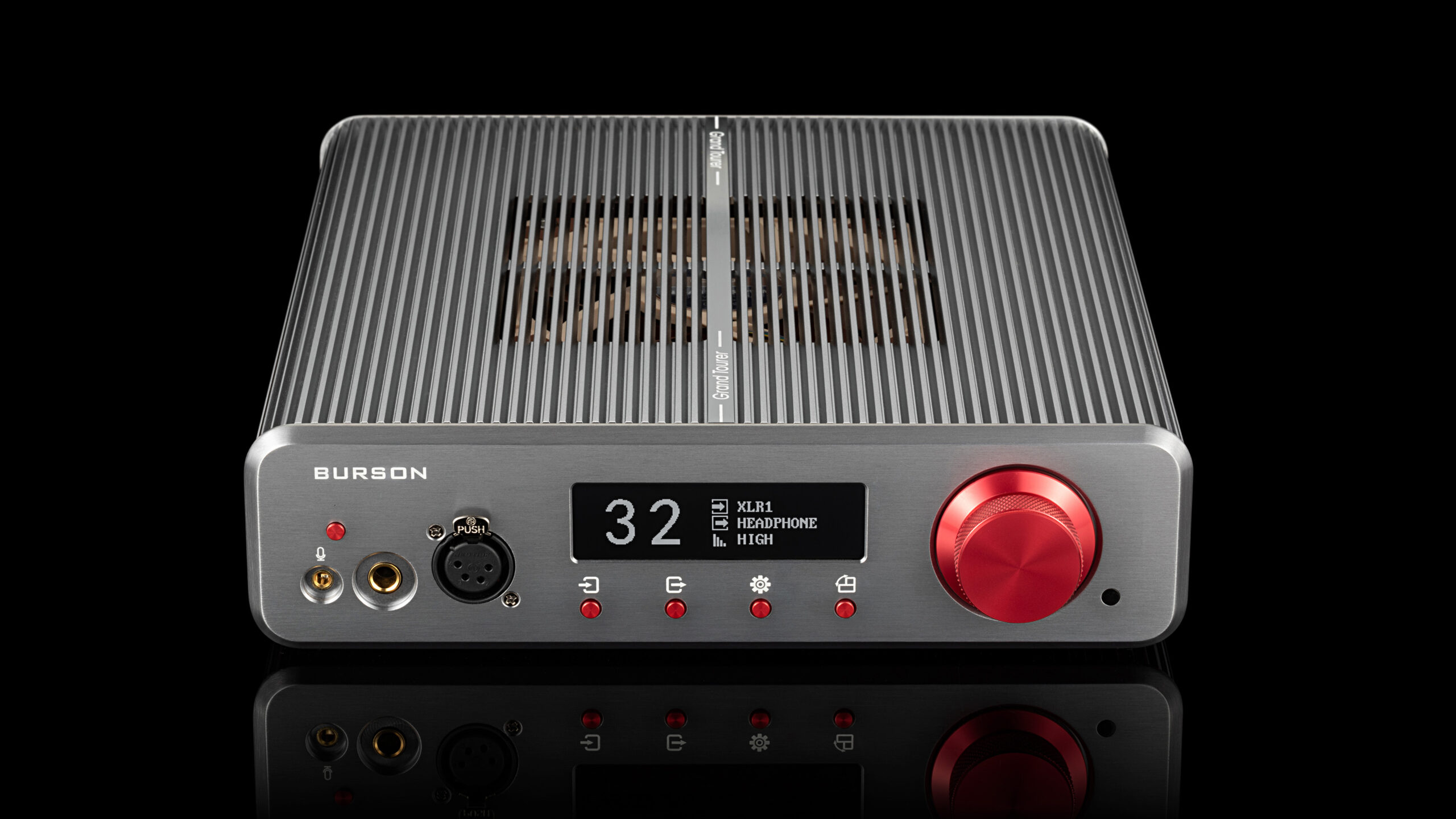
High-resolution power plant
With music coming through the headphones, there’s no doubt that the Soloist 3X GT is unlike any other amplifier. My goodness, such power and control! The Audeze LCD-5 drives with such control and tightness that I almost couldn’t have asked for a better match. Billie Eilish’s Lost Cause is an excellent example of a track that has both dynamic, tight, deep bass and plenty of air. And a close and warm vocal to boot.
The producer (Billie’s brother) has been playing around a lot here, including putting every other bass drum beat in counterphase. This way the bass drum extends far out to the sides of the head. This effect is so clear and distinct with the Burson amplifier that I wonder if I’ve ever heard it so clearly before. Some good amps can bring out the small but important details here, others put more emphasis on the rhythms and energy. But few, if any, reconcile both aspects as convincingly as the Soloist 3X GT.
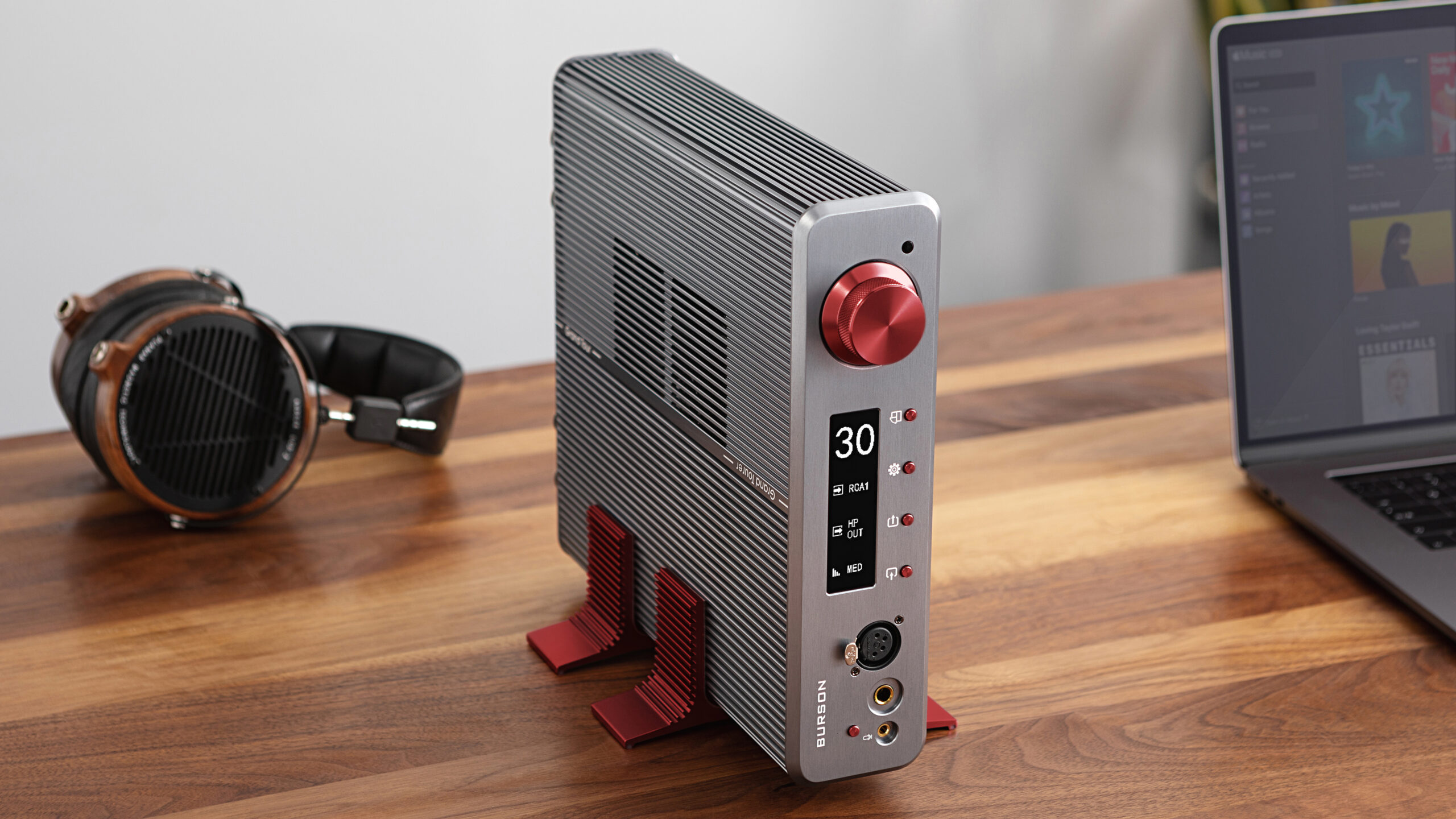
Jazz singer Patricia Barber has rarely sounded as good as she does here. The warm sweetness of midrange that characterises her voice is evident as the cymbals dance featherily in the air. And what a double bass sound! It almost glows.
The Sennheiser HD 800 S really gets going too, if that’s what you want. It has deep bass, but it doesn’t come across very well with all amps. But with the Burson, the bass comes through and I understand the headphones better when you give them proper muscle. They get a crazy dynamic and can be pulled as far as you like – much further than the planar LCD-5. The only thing I miss from Burson might be a tone control, because I’d like to adjust the bass in the HD 800 S.

Warm sound, but not like valve amplifiers
I might be tempted to say that the Soloist 3X Grand Tourer sounds like a seductive valve amp. But that would be a lie. Because the Burson amp has so much better control with fast transients than any valve amp I’ve heard. And with an airy soundstage that extends well beyond the sides of your ears.
Replacing the op-amp
Of course, I had to try switching the op-amps from the Vivid that’s installed to the Classics that are included. Then the sound gets a bit warmer and fuller in the midrange, maybe, but the soundstage shrinks in size and the bass doesn’t have the same control. Immediately, it might give the impression of being bigger and more physical to begin with, but that’s probably more about the Classic op-amps being a bit slower than the Vivids, which makes the bass feel fatter and therefore perhaps bigger. But you only have to turn up the volume a little to hear that the bass sounds better with the Vivid.
For my money, the Classic op-amps didn’t have anything to offer that the Vivids didn’t solve better. In other words: I wouldn’t mess with it. Just leave the amp alone, and leave the excess op-amps in the box.
NB. Of course, I managed to fry some op-amps when I switched back, as I wasn’t paying enough attention to the direction …
Subwoofer?
Like many headphone amps, this one can be used as a preamp, and it even has a remote control. What’s a bit special, though, is that it has a subwoofer output. But even more special is that the subwoofer can be active in combination with the headphone output!
Because the only thing missing when listening via headphones is physically feeling the music in your body, just like you do with big speakers. If you’re crazy enough, you can plug in a subwoofer – or a Buttkicker – to work with your headphones.
I must admit I haven’t tried it, but I bet it will be as great for the user as it will be a nuisance for the people around him.
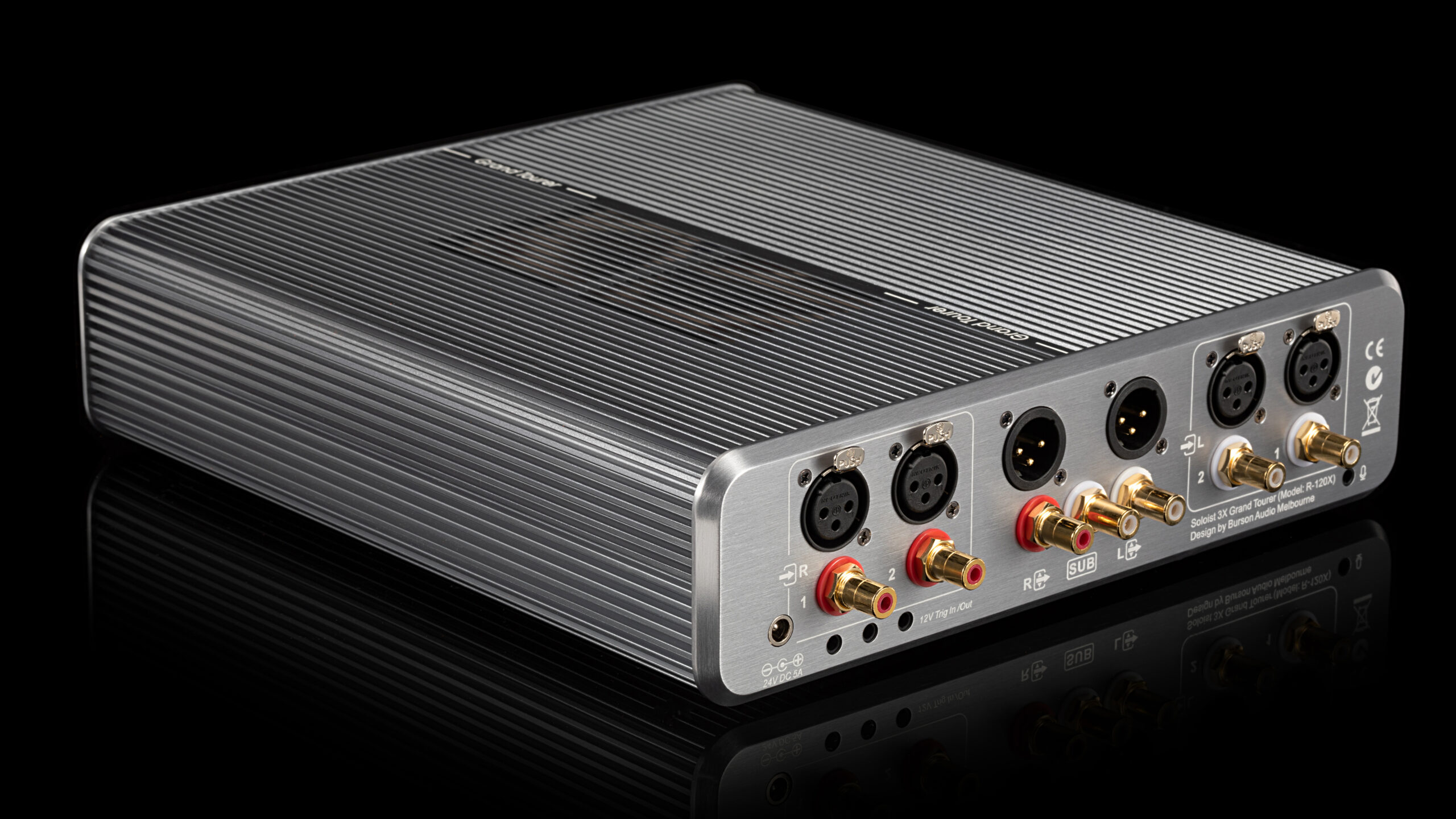
Competitors
The Auralic Taurus, which was in the same price range when it went on sale, is claimed to have about half the power of the Burson amplifier, but is a powerful thing nonetheless. Also, it has no fan, which can definitely be an advantage.
Nevertheless, the Burson amp is both more powerful and with more projection when playing loud, and also with better resolution at the top. The Taurus can be experienced with a slightly coarse-grained treble on individual headphones, where the Soloist 3X GT has a much more fine-meshed and airy presentation. And a larger soundstage.
The Sennheiser HDV 820 also costs about the same as the Burson amplifier, but since you also get the DAC in the HDV 820, it would be a much better buy if it were as good. It isn’t. The Sennheiser sounds very nice, and it has fine dynamics. But it sounds a bit duller and ‘nicer’ and has nowhere near the same power.
Then the Naim Uniti Atom HE is more exciting. Here too you get built-in DAC and also very user-friendly streaming with app. A super-modern headphone amp that also sounds absolutely terrific. Until it loses its breath, it has insane speed and punch, but it says stop before Burson. And doesn’t have as much spatial dimension in the soundstage.
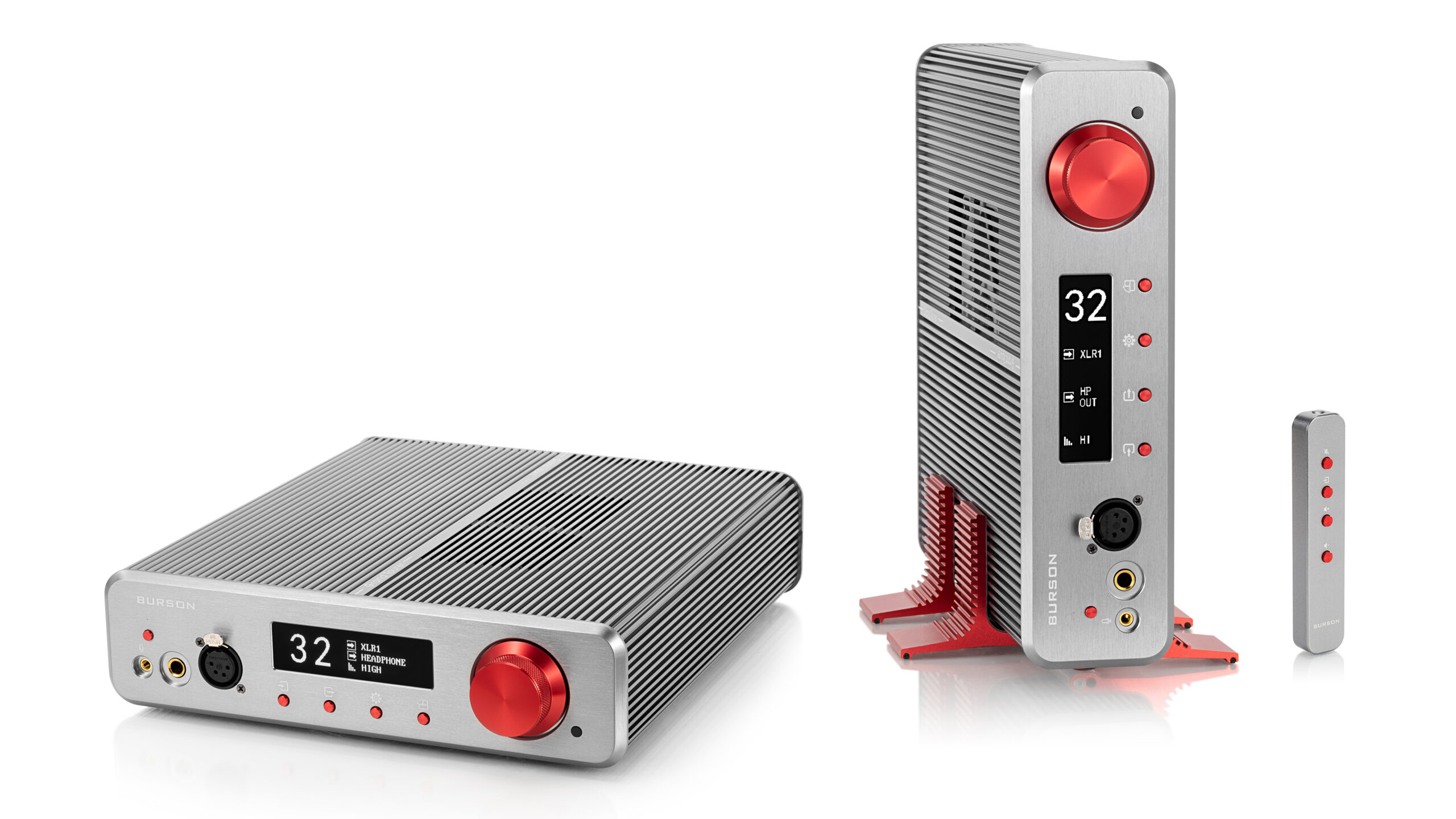
Conclusion
The Burson Audio Soloist 3X GT is a super-capable headphone amp that has an almost inexhaustible amount of power combined with a resolution that makes the music flow in the most airy way. Everything sounds ‘right’, and the amp has insane control no matter what headphones it’s used with.
The Vivid operational amps that come with the amp sound even better than the Classic variants that come with it and can be switched to. It just doesn’t make sense, is my assessment. You get more air, more room and better controlled bass with Vivid op-amps.
With all those great words, I still wonder if the GT amp is a bit redundant unless you have seriously heavy-driven headphones. If you buy the little brother Soloist 3X Performance, you also get plenty of power and you don’t need the fan. If you need one with a DAC too, the Conductor 3X Grand Tourer is only slightly more expensive. And you get Bluetooth too!

We think
Great sound quality plus more power than you could ever dream of. Remote control and subwoofer output, what more could you want? The fan is audible, regardless of what the advertisement says. Audible noise floor on high sensitivity headphones.
2599 €
Specifications
- Output power: 10 W / 5 W (16 ohm bal./unbal.), 8 W/4 W (32 ohm, bal./unbal.), 640 / 320 mW (300 ohm bal./ubal.)
- Inputs: 2 x RCA, 2 x XLR, Mic. bypass
- Outputs: 6.3 mm unbalanced jack, 4-pin XLR, RCA + XLR line/preamp out, subwoofer out
- Network: No
- Digital Converter: No
- Streaming technologies: No
- Dimensions: 7 x 25.5 x 27 cm (H x W x D)
- Weight: 5 kg
- Color: Silver
- Web: bursonaudio.com
